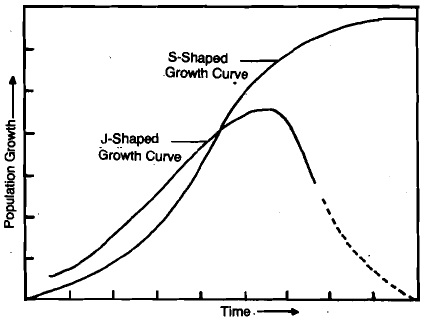Attributes of Population
The attributes of a population are of two basic types : i) Numerical attributes such as density, mortality (birth rate), mortality (death rate), dispersal and ii) structural attributes like age distribution, dispersion and growth form. Some of the basic attributes of population are briefly described below.
a) Numerical attribute:
Density: number of individuals per unit area.
Natality (Birth rate): the rate at which new individuals are added to a population through reproduction.
Mortality (Death rate): the rate at which individuals are lost from a population by death. ,
Dispersal: the rate at which individuals of a population emigrate or migrate from an area.
b) Structural attributes:
Population growth form: refers to the pattern of population growth. There are two basic patterns of population growth represented by 'T' and "S" shaped growth curves, see Figure for explanation.

Dispersion: the pattern of distribution of individuals in space, Age distribution: the proportion of individuals of different age groups in a population.
Now you know some of the more important attributes of a population. It is reasonable to ask: How populations are studied? Do all attributes have equal importance, or are some more important than others? In analysing population, the main attributes studied is the density of the population which depends on four parameters: i) natality, ii) mortality, ii) immigration and, iv) emigration.